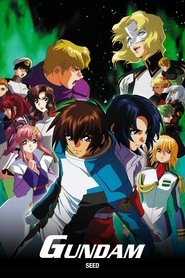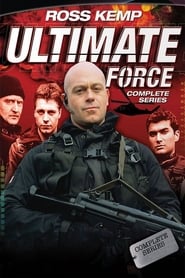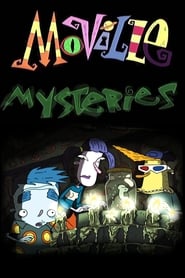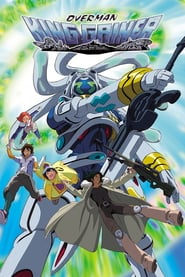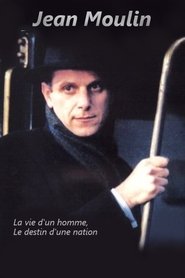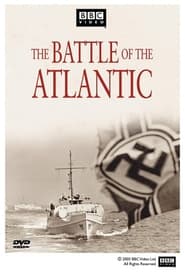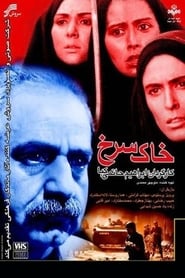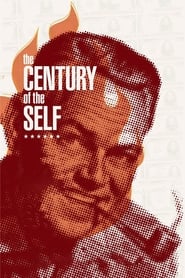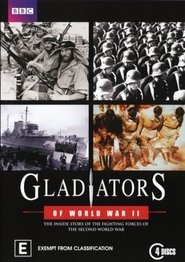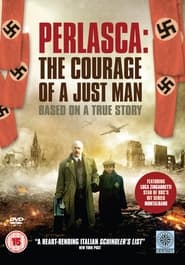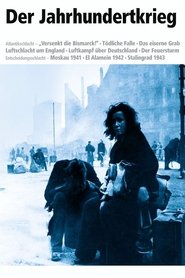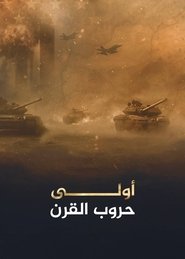New War Politics TV Series - Page 100
-
Mobile Suit Gundam SEED
2002
star 7.5Cosmic Era 71. Mankind has developed into two subspecies: Naturals, who reside on Earth, and Coordinators, genetically enhanced humans capable of withstanding the rigors of space who inhabit orbital colonies known as PLANTs. The story revolves around a young Coordinator named Kira Yamato, who becomes involved in the war between the two races after a neutral space colony secretly developing mobile suits for the Earth Alliance is attacked by the PLANTs' military force, ZAFT. -
Ultimate Force
2002
Ultimate Force
2002
star 6.6This covert combat series focuses on the Red Troop, an elite group of soldiers from the British military's Special Air Service group. -
Moville Mysteries
2002
Moville Mysteries
2002
star 10Moville Mysteries is a Canadian/American animated TV series starring Frankie Muniz as Moville. It ran for one season of 26 episodes from September 7, 2002 to May 14, 2003. The show is on YTV in Canada, The N in the United States, and Jetix in Latin America. It was originally an Oh Yeah! Cartoon on Nickelodeon, making it the only short to not be adapted into a series by Nickelodeon. In the USA, The N premiered the show on October 19, 2002. -
Overman King Gainer
2002
Overman King Gainer
2002
star 8.3Overman King Gainer is an anime TV series, created by Sunrise. Directed by longtime animator Yoshiyuki Tomino, the creator of the Gundam series, written by Ichirō Ōkouchi, and featuring character designs by Yoshihiro Nakamura, Kinu Nishimura and Ken'ichi Yoshida, the series ran from September 7, 2002 to March 22, 2003 on Japan's WOWOW network, spanning a total of 26 episodes. -
Liberty's Kids
2002
Liberty's Kids
2002
star 7.6Liberty's Kids is an animated educational historical fiction television series produced by DIC Entertainment, originally broadcast on PBS Kids from September 2, 2002 to April 4, 2003, although PBS continued to air reruns until August 2004. The show has since been syndicated by DiC to affiliates of smaller television networks such as The CW and MyNetworkTV and some independent stations so that those stations can fulfill FCC educational and informational requirements. Since September 16, 2006, the series aired on CBS's new block called KOL Secret Slumber Party on CBS, then it was aired on KEWLopolis, which taking September 12, 2009. In 2008 it ran on The History Channel. The series is currently on the Cookie Jar Toons block on This TV and CBS's Cookie Jar TV. In 2012, Qubo announced the channel will air Liberty's Kids in fall 2012. The series was based on an idea by Kevin O'Donnell and developed for television by Kevin O'Donnell, Robby London, Mike Maliani, and Andy Heyward. -
Jean Moulin
2002
-
Battle of the Atlantic
2002
star 6.9Explores the desperate struggle for survival on a hostile ocean during the longest and bloodiest battle of the Second World War. -
Karmapala
2002
-
The Red Soil
2002
The Red Soil
2002
star 2A political prisoner in Shaah regime who lost his little girl in Tehran City before his conviction, be released and return to his own city (Khorramshahr) after 15 years. In this time his girl knows about her origin and try to find her father, but Iran-Iraq war begins and Iraq army brunt to Khorramshahr City. -
Urda: The Third Reich
2002
star 3Urda: The Third Reich is an original net animation written and directed by Romanov Higa. The story takes place circa 1943, during World War II. Facing a losing war, the Nazi Party discovers a marooned spaceship capable of time travel, thus enabling them to alter the outcome of their fate. Enter Erna Kurtz, a newly hired spy who stumbles upon the Nazis' plot. With the help of her fearless friend Janet, Erna must face her past in order to secure her future. -
Landa Bazar
2002
Landa Bazar
2002
Landa Bazar (Urdu: لنڈا بازار, English: 'Flea Market') is a 2002 Pakistani television drama serial aired on Prime Entertainment (STN). It is directed by Dilawar Malik and written by Khalil-ur-Rehman Qamar, premiered on 17 April 2002. The serial stars Tauqeer Nasir, Ali Zafar, Waseem Abbas, Kashif Mehmood, Babar Ali, Farah Shah, Mehmood Aslam, Jana Malik, and Urooj. A sequel of the series, Laal Ishq was aired on A-Plus TV from 2017 to 2018. -
盖世太保枪口下的中国女人
2002
盖世太保枪口下的中国女人
2002
-
Special Squad
2002
-
The Century of the Self
2002
star 8.5The legacy of famed psychoanalyst Sigmund Freud informs the lives of people throughout the world even to this day, though it's a phenomenon to which most are unaware. The film is an exhaustive examination of his theories on human desire, and how they're applied to platforms such as advertising, consumerism and politics. -
Gladiators of World War II
2002
In this BBC documentary series newly declassified documents are used to examine the strategic roles played in the war by thirteen of the world's regular and resistance land, sea and air forces. -
Perlasca: The Courage of a Just Man
2002
star 7The true story of Giorgio Perlasca, an Italian cattle dealer and avowed fascist who — trapped in Nazi-occupied Budapest after Italy's armistice with the Allies — nevertheless saved more than 5,000 Hungarian Jews from the Holocaust through a combination of lies, bribery and derring-do. -
American Morning
2002
American Morning
2002
American Morning was a morning news television show that aired on CNN. It ran from 2001 to 2011. American Morning debuted on the day after 9/11, five months earlier than planned. It was anchored by Paula Zahn and Anderson Cooper at its inception. Cooper was replaced by Bill Hemmer in February 2002. The show's next permanent co-anchors were Soledad O'Brien and Miles O'Brien, who fronted the show from 2003 to 2007. They were replaced by John Roberts and Kiran Chetry due to poor ratings. After Roberts and Chetry left in 2011, the show did not have a permanent anchor team and was shelved by CNN at the end of the year. American Morning was replaced by two new programs, Early Start and Starting Point. -
Der Jahrhundertkrieg
2002
-
أولى حروب القرن
2002
أولى حروب القرن
2002
-
The Zulu Wars
2002
The Zulu Wars
2002
star 7This series explores the facts and investigates the truth behind the British Redcoat Army's campaign in Zululand during 1879. The war was started by a country at the height of it's imperial powers and prosecuted by an army charged with the responsibility of implementing a policy known as Confederation - a proposal to unite various black and white factions in South Africa under British authority. Interviews, on-location footage and new geological surveys all help to reconstruct the conflicts and give insight into the tactics used in these epic battles.
 Netflix
Netflix
 Amazon Prime Video
Amazon Prime Video
 Apple iTunes
Apple iTunes
 Apple TV Plus
Apple TV Plus
 Disney Plus
Disney Plus
 Google Play Movies
Google Play Movies
 Paramount Plus
Paramount Plus
 Hulu
Hulu
 HBO Max
HBO Max
 YouTube
YouTube
 fuboTV
fuboTV
 Peacock
Peacock
 Peacock Premium
Peacock Premium
 Amazon Video
Amazon Video
 The Roku Channel
The Roku Channel
 AMC+
AMC+
 Kocowa
Kocowa
 Hoopla
Hoopla
 The CW
The CW
 Vudu
Vudu
 Starz
Starz
 Showtime
Showtime
 PBS
PBS
 Pantaflix
Pantaflix
 FXNow
FXNow
 Tubi TV
Tubi TV
 Kanopy
Kanopy
 Comedy Central
Comedy Central
 Crunchyroll
Crunchyroll
 Microsoft Store
Microsoft Store
 Redbox
Redbox
 Sun Nxt
Sun Nxt
 ABC
ABC
 DIRECTV
DIRECTV
 Crackle
Crackle
 Fandor
Fandor
 Plex
Plex
